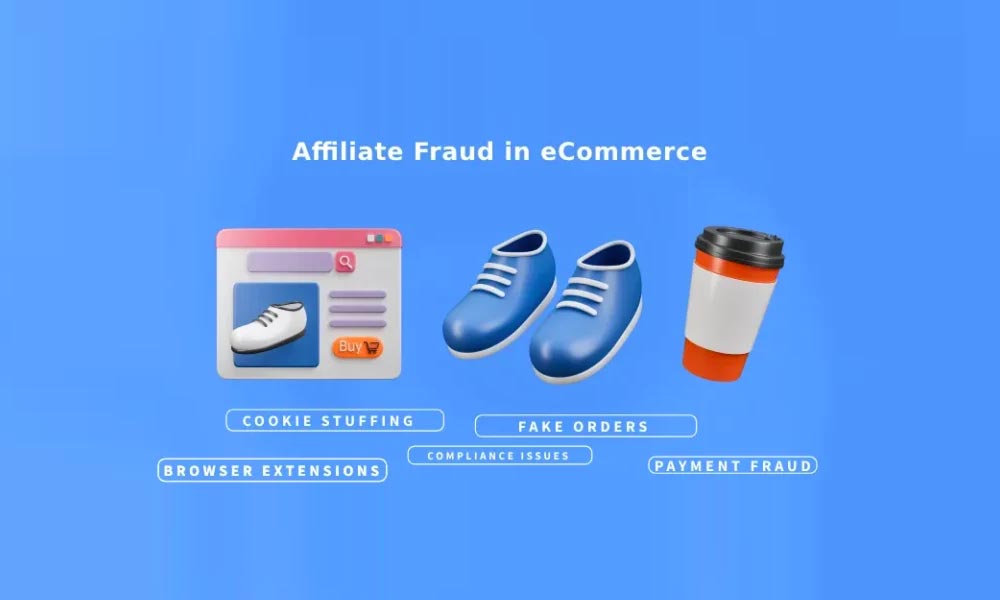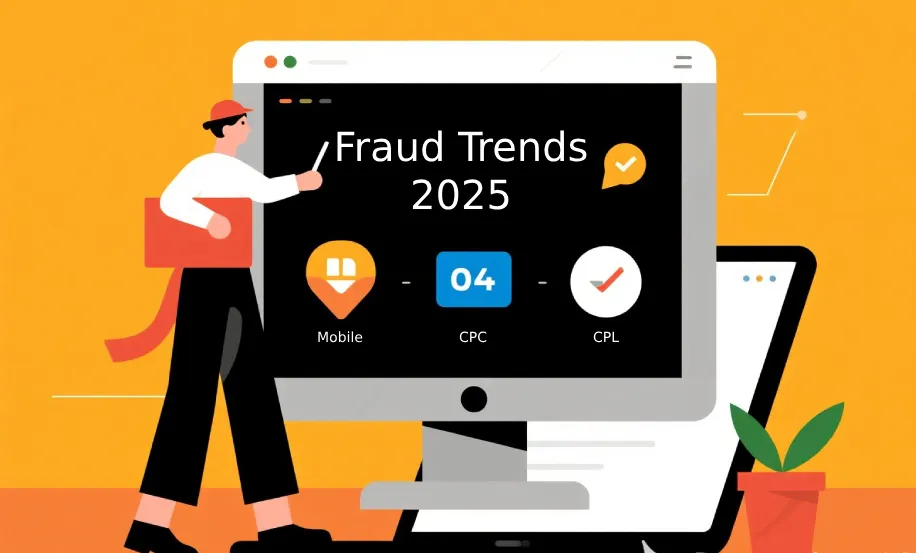Affiliate marketing has become a cornerstone of eCommerce growth, driving billions in revenue annually. However, with great opportunity comes significant risk. Affiliate fraud costs businesses an estimated $1.4 billion annually, making it one of the most pressing challenges facing digital marketers today.
Understanding the various forms of affiliate fraud is crucial for protecting your business, maintaining customer trust, and ensuring your marketing budget delivers genuine results. This comprehensive guide explores the most common types of affiliate fraud and provides actionable strategies to combat them.
What is Affiliate Fraud and Why Should You Care?
Affiliate fraud occurs when affiliates use deceptive or illegitimate methods to generate commissions from affiliate programs. These fraudulent activities not only drain marketing budgets but can also damage brand reputation, skew performance metrics, and expose businesses to legal risks.
The sophistication of fraud techniques continues to evolve, making detection increasingly challenging. However, by understanding these methods and implementing robust prevention measures, businesses can significantly reduce their exposure to fraudulent activities.
Cookie Stuffing: The Silent Commission Thief
How Cookie Stuffing Works in Affiliate Marketing
Cookie stuffing, also known as cookie dropping, involves placing tracking cookies on users’ devices without their knowledge or consent. Fraudulent affiliates accomplish this through various methods:
- Hidden iframes: Embedding invisible affiliate links in web pages that automatically load tracking pixels
- Forced redirects: Automatically redirecting users through affiliate links before reaching their intended destination
- Pop-under windows: Opening hidden browser windows containing affiliate links
- Malicious browser extensions: Installing software that automatically generates affiliate cookies
When users later make purchases from the merchant, the fraudulent affiliate receives credit despite having no role in influencing the buying decision.
Business Impact of Cookie Stuffing Fraud
Cookie stuffing can result in significant financial losses, as legitimate affiliates lose commissions to fraudsters. Additionally, it inflates conversion rates artificially, making it difficult to assess genuine marketing performance and leading to poor strategic decisions.
Cookie Stuffing Prevention Strategies
- Implement strict affiliate screening processes and regular audits
- Monitor for unusual traffic patterns, such as high conversion rates with low engagement metrics
- Use advanced fraud detection tools that analyze user behavior patterns
- Employ server-side tracking to reduce reliance on browser cookies
- Set up alerts for affiliates showing suspicious activity patterns
TypoSquatting: Exploiting User Mistakes for Fraudulent Gains
Understanding TypoSquatting in Affiliate Fraud
TypoSquatting involves registering domain names that closely resemble popular brand names or websites, typically containing common typing errors. For example, an affiliate might register “amazom.com” instead of “amazon.com” to capture users who make typing mistakes.
These fraudulent domains often:
- Redirect users to legitimate sites through affiliate links
- Display affiliate advertisements mimicking the original brand
- Collect user information for later exploitation
- Install malware or unwanted software
The Business Impact of TypoSquatting
TypoSquatting not only diverts legitimate traffic but can also damage brand reputation when users encounter poor-quality or malicious content on typosquatting sites. It creates unfair competition and can lead to trademark infringement issues.
How to Protect Your Brand from TypoSquatting
- Register common misspellings of your domain name
- Monitor domain registrations for variations of your brand name
- Implement trademark protection services
- Use domain monitoring tools to detect new registrations
- Take legal action against clear trademark violations
- Educate customers about official website URLs
Fake Orders: Manufacturing False eCommerce Success
How Fake Order Fraud Operates
Fake order fraud involves affiliates creating fictitious transactions to earn undeserved commissions. This can happen through:
- Self-referral schemes: Affiliates making purchases through their own links
- Stolen credit card information: Using fraudulent payment methods to create fake orders
- Return fraud: Making legitimate purchases with the intention of returning items after receiving commissions
- Coordinated fraud rings: Multiple individuals working together to create the appearance of legitimate sales
Business Consequences of Fake Order Fraud
Beyond direct financial losses, fake orders distort sales data, affect inventory management, and can lead to chargebacks and payment processor penalties. They also waste resources on fulfillment and customer service for non-genuine customers.
Fake Order Detection and Prevention Methods
- Implement robust identity verification for new affiliates
- Monitor for unusual ordering patterns, such as multiple orders from the same IP address
- Cross-reference billing and shipping addresses for inconsistencies
- Use machine learning algorithms to identify suspicious transaction patterns
- Implement waiting periods before paying commissions on high-risk orders
- Require additional verification for high-value transactions
Post-Payment Method Abuse: Gaming Modern Payment Systems
Common Post-Payment Fraud Schemes
Post-payment fraud occurs when affiliates manipulate payment systems that allow transactions to be completed before funds are verified. Common schemes include:
- Buy Now, Pay Later (BNPL) exploitation: Creating accounts with false information to make purchases without payment intent
- Invoice manipulation: Altering payment terms or amounts after affiliate tracking occurs
- Payment method switching: Changing payment methods after tracking cookies are set
- Installment plan abuse: Setting up payment plans with no intention of completing payments
Protecting Your Business Against Post-Payment Fraud
- Verify customer identity and payment information before processing affiliate commissions
- Monitor payment completion rates by affiliate source
- Implement delayed commission payments for post-payment transactions
- Use real-time payment verification systems
- Establish clear policies for commission reversals on failed payments
- Regular auditing of payment completion rates across different affiliates
Brand Bidding Fraud: Unauthorized Use of Your Trademarks
What Constitutes Brand Bidding Fraud
Brand bidding fraud occurs when affiliates bid on trademarked terms in paid search campaigns without authorization. This includes:
- Bidding on exact brand names or product names
- Using brand names in ad copy without permission
- Creating ads that appear to be official brand communications
- Competing directly with official brand campaigns for the same keywords
The Financial Damage of Unauthorized Brand Bidding
Unauthorized brand bidding increases advertising costs for legitimate brand campaigns, confuses customers about official channels, and can dilute brand messaging. It also creates unfair competition where affiliates profit from brand equity they didn’t build.
Brand Bidding Prevention and Management
- Clearly define brand bidding policies in affiliate agreements
- Regular monitoring of paid search results for unauthorized use
- Use trademark monitoring tools to detect violations
- Implement automated alerts for brand term bidding
- Establish clear consequences for policy violations
- Work with search engines to report trademark violations
Click Fraud on Display Ads: The Artificial Inflation Problem
Understanding Display Ad Click Fraud in Affiliate Marketing
Click fraud in display advertising involves generating artificial clicks on affiliate advertisements to inflate performance metrics and earn undeserved commissions. Methods include:
- Bot traffic: Using automated programs to generate fake clicks
- Click farms: Employing people to manually click on advertisements
- Incentivized clicking: Paying users to click on specific ads
- Publisher fraud: Website owners generating artificial clicks on their own ads
How Click Fraud Impacts Campaign Performance
Click fraud wastes advertising budgets, skews performance analytics, and reduces the effectiveness of targeting algorithms. It can also trigger account suspensions from advertising platforms and damage relationships with legitimate publishers.
Advanced Click Fraud Detection and Prevention
- Use click fraud detection software to identify suspicious patterns
- Monitor for unusual click-to-conversion ratios
- Analyze traffic sources for bot-like behavior
- Implement IP filtering to block known fraudulent sources
- Use device fingerprinting to identify suspicious devices
- Regular auditing of traffic quality metrics
- Work with ad platforms that have built-in fraud detection
Building a Comprehensive Affiliate Fraud Prevention Strategy
Multi-Layered Defense Approach
Effective fraud prevention requires a combination of technology, processes, and human oversight:
Technology Solutions for Fraud Prevention
- Advanced analytics and machine learning for pattern detection
- Real-time monitoring systems with automated alerts
- Identity verification and device fingerprinting
- Blockchain-based tracking for transparency
Process Improvements
- Thorough affiliate vetting and onboarding procedures
- Regular audits and performance reviews
- Clear policies and consequences for violations
- Incident response protocols for detected fraud
Human Oversight Elements
- Dedicated fraud analysis teams
- Regular training for staff on fraud detection
- Industry collaboration and information sharing
- Legal action against persistent violators
Key Performance Indicators for Affiliate Fraud Detection
Monitor these critical metrics to identify potential fraud:
- Conversion rates significantly higher than industry averages
- High traffic volume with low engagement metrics
- Unusual geographic distribution of conversions
- Suspicious timing patterns in transactions
- Abnormal return rates or chargeback frequencies
- Inconsistent user behavior patterns
The Future of Affiliate Fraud Prevention
Emerging Technologies in Fraud Detection
As fraud techniques become more sophisticated, prevention methods must evolve accordingly. Emerging technologies like artificial intelligence, blockchain verification, and advanced biometrics offer promising solutions for combating affiliate fraud.
Industry Collaboration and Regulatory Evolution
Industry collaboration will become increasingly important, with businesses sharing threat intelligence and best practices to stay ahead of fraudsters. Regulatory frameworks may also evolve to provide clearer guidelines for affiliate marketing practices and fraud prevention requirements.
Conclusion: Protecting Your Affiliate Marketing Investment
Affiliate fraud represents a significant and evolving threat to eCommerce businesses. While the challenges are substantial, implementing comprehensive fraud prevention strategies can effectively protect your business while maintaining the benefits of affiliate marketing.
Success requires ongoing vigilance, investment in appropriate technology, and a commitment to maintaining high standards across your affiliate network. By understanding the various forms of fraud and implementing robust prevention measures, businesses can build sustainable affiliate programs that drive genuine growth while minimizing risk.
Remember that fraud prevention is not a one-time effort but an ongoing process that must adapt to new threats and changing market conditions. Stay informed about emerging fraud techniques, regularly update your prevention strategies, and maintain strong relationships with legitimate affiliates who share your commitment to ethical marketing practices.
The investment in comprehensive fraud prevention will pay dividends through improved campaign performance, better customer relationships, and sustainable business growth in the competitive eCommerce landscape.
Advanced Fraud Detection with 24metrics
24metrics offers cutting-edge solutions to help businesses combat affiliate fraud through automated detection algorithms and artificial intelligence. Our advanced platform can help you:
- Detect fraud in real-time using machine learning algorithms that identify suspicious patterns across all fraud types mentioned in this guide
- Automate prevention measures with AI-powered systems that flag potential cookie stuffing, fake orders, and click fraud before they impact your bottom line
- Monitor brand bidding violations with automated trademark monitoring and alert systems
- Analyze traffic quality using sophisticated algorithms that distinguish between genuine and fraudulent user behavior
- Generate actionable insights through comprehensive reporting and analytics that help optimize your affiliate program performance
With 24metrics’ AI-driven approach to affiliate fraud prevention, you can protect your marketing investment while scaling your affiliate programs with confidence. Our automated detection algorithms continuously learn and adapt to new fraud techniques, ensuring your business stays ahead of evolving threats in the affiliate marketing landscape.



